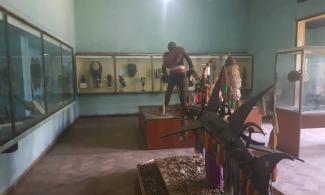
Upon exiting the museum, our correspondent witnessed the stabbing of a tourist by hoodlums, who ambushed the victim.
Beige stones inter-woven with rebelling grasses, plastic waste and overgrown hedges litter the steps that lead to the derelict Jos Museum in Plateau State. The mysterious village, which houses centuries-old artefacts was established in 1952 to conduct research into prehistoric cultures and accommodates original Nok terracotta and other important historical items dating between 500BC to AD 200. Sadly, the place has since fallen into ruins.

Jolted by approaching footsteps, the receptionist, who sat in a solitary chair, sprung up from his nap – arms stretched as he rang out rehearsed orders – “You have to pay N200 each, no photos!”

Upon payment, access was granted into the humid gallery, dimly lit with no air conditioning. Apart from a few lucky ancient artefacts enclosed in scratched glasses, other objects stood bare and dusty under a dripping roof; awaiting the curious or lacklustre glimpse of tourists, who trickle into the building contemplating its ruin.
World Bank statistics show that every year, Nigeria is losing at least $8bn in tourism receipts. This is happening at a time where globally, tourism has become a sustainable revenue earner competing favourably with the manufacturing sector.

Demarcated by a thin film of sunlight, the gloomy gallery gave way to sadder sights of dried up decorative ponds surrounded by massive disappearing ancient pottery collection dating hundreds of years.
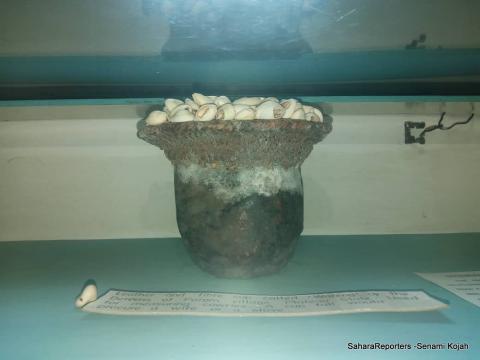
“I remember coming here as a child with my teachers on excursion. I remember we counted just about five goldfishes in all the ponds then, so I'm not surprised it’s dry now.

“The water was muddy even then. Also, there used to be a lot of people looking at these pots, even white people but now you can see the pots are all broken and scattered.
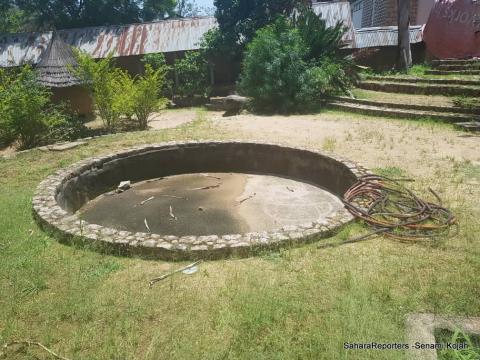
“It’s just three of us here and we’ve been here for more than an hour,” said Jessica Nanle, a local who had come to see the crumbling museum for the umpteenth time.
A place where pots take their ‘final breath’
“Please do not touch the pots”, a dusty sign sitting helplessly with the pottery, read – a seeming paradox of the entire scene.
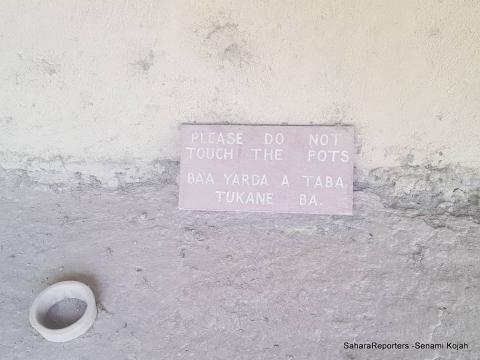
Odd brown, red and blue ancient pots from Mambila (Taraba State/Southern Cameroon), Bauchi, Borno, Benin and other parts of Nigeria still bearing classification/price tags, lay exposed to the elements; some in forgotten boxes, others in their hung positions and two in an abandoned fish pond.



The vessels, which could churn billions in tourism revenue for Nigeria, lie unattended, inhabited by spirited lizards and spiders, who had taken up permanent residence inside them.
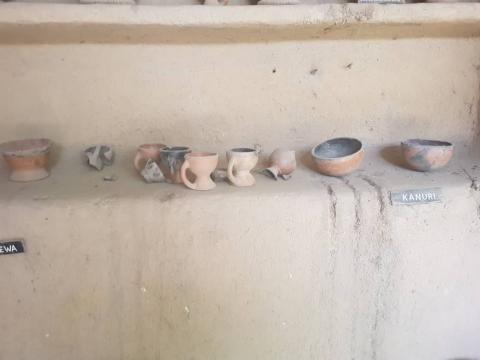
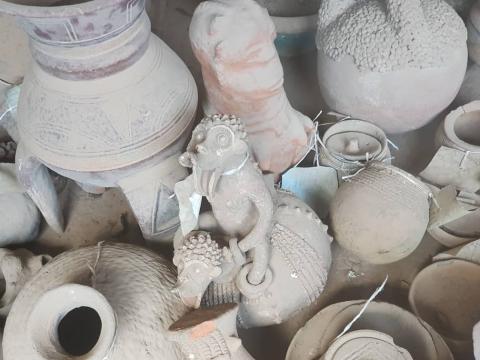
American corner
Back inside the now eerily dark gallery, the receptionist, who was now fully awake and listening to a small radio with which he tracked happenings around the world, re-echoed his initial warning – “No photos” – while pointing to a part of the room that looked like a teleportation scene from a movie.
Funded by the United States Government, an organisation named RE-ORG, created a parallel gallery complete with electric bulbs, proper storage units for restored artefacts and an interactive display – a stark contrast to what lies at the other end of the hall managed by the Nigerian Government.

In a display sign at the entrance, RE-ORG said it recreated the space to prove that, “museum teams can now efficiently implement their plan of collection storage”.
Another tourist, Chuks, who seemed eager to vent the dissatisfaction on his visit said, “The facilities in this museum are not what they used to be because of human activities and natural activities.
“You can see erosion has affected the place so badly that the staircase is about to fall. It is really sad.”
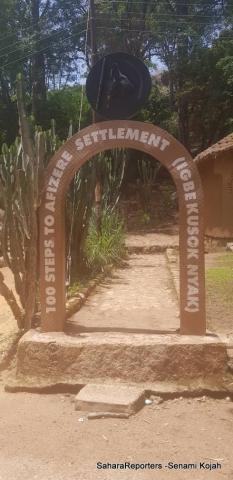
100 steps of death
“Do not go to the hundred steps, two days ago they killed a boy there. The bad boys asked for his phone and when he refused, they stabbed him, collected it and left him to bleed there.
“We found his body after his family came to look for him,” the receptionist warned.
The museum houses an ancient Afizere settlement, which ascends into the sky by hundred steps. The rocks, which were inhabited to serve as a defence against Jihadist in colonial times, now serves as a hideout for hoodlums in the area, who steal from unsuspecting tourists.

An official of the museum, Amuzie Christopher, while commenting on the state of the facility, said, “The museum is still waxing stronger to develop our cultural foundations and also help develop our tourism sector as well.
“We are synergising the formal and informal sector of education and tourists do come around to have fun.”
When asked about budgetary allocations from the Nigerian Government to the museum, he said, “I cannot comment on that.
“Even in our local government, we cannot say how much is budgeted for a particular community let alone a federal institution.”

In the 2014 appropriation bill, the National Commission For Museums and Monuments budgeted a paltry N10m for “repair and maintenance of museums” while the Institute for Archaeology and Museum Studies, Jos, budgeted and received only N1.3m for “general maintenance”.

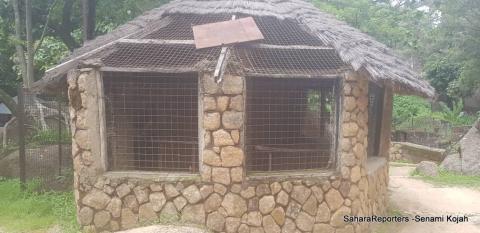
A total allocation of N111, 286, 677m was made to the museum in 2014, a clear case of underfunding in a vital industry. In 2019, the Jos Museum budgeted N158, 197, 120 for its total allocation, an indication that no real improvement or plans are in place to lift the museum from total collapse.
Blood stained zoo
An unsteady metal bridge sandwiched between a muddy crocodile cage and a refuse-filled water passage connects the Jos Museum to the Zoological Garden. Filled with empty cages and starving animals, the population of animals in the zoo has declined due to lack of conservation and huge underfunding in stark contrast to 1999 when the zoo housed 62 mammals of different species, 60 birds of 18 species and 39 reptiles of nine species.
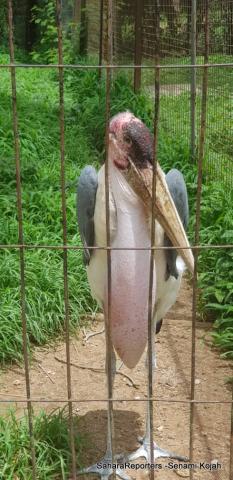
Baboons in the zoo feed mainly on the generosity of amused school children on excursion, who are the dominant visitor group to the zoo.
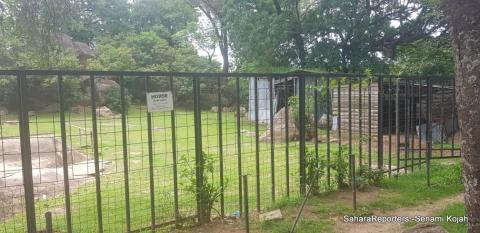
The two surviving storks in the zoo are however, not as lucky. Yards away from their grass-filled cage, the stench of their decay and bloated guts fill the air, scaring away visitors. Upon closer inspection of the shrivelled bird, rotting scabs and bloody veins now cover areas where feather used to sit.
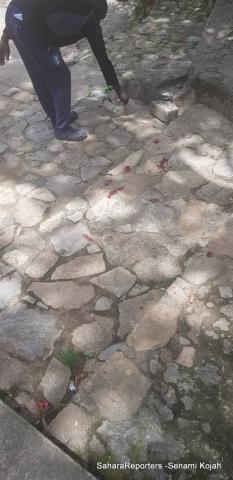
“What is going on in that zoo is nothing short of animal cruelty. Some of the animals don’t feed well, they have no mates to serve as companions and most of them are sick.
“Some have no shelter when it rains and they are exposed. It is sad and I hope the government acts fast,” said Peter Guvan, a conservationist and animal rights activist.
Upon exiting the museum, our correspondent witnessed the stabbing of a tourist by hoodlums, who ambushed the victim. Workers at the zoo made spirited attempts to cover the trail of blood with sand. It was a frightening reminder to the danger many visitors to this old, crumbling museum in the heart of one of Nigeria’s most serene cities now contend with on daily basis.
In spite of the enormous tourism potentials in Nigeria, International Tourism Expenditures data was reported at $4.511bn in December 2016. This indicates a decrease from the previous number of $9.206bn in December 2015. Nigeria’s International Tourism Expenditures data is updated yearly, averaging $3.536bn from December 1995 to 2016, with 21 observations. The data reached an all-time high of $11.009bn in 2008 and a record low of $501.000m in 2005.
The sharp decline in not unconnected to brazen mismanagement as seen at the Jos Museum – a facility experts say could potentially generate at least $2.2m in two months from gate takings alone if properly curated and managed to attract visitors. But with its present state, it is only a matter of time before it is tucked deep into the graveyard of history.